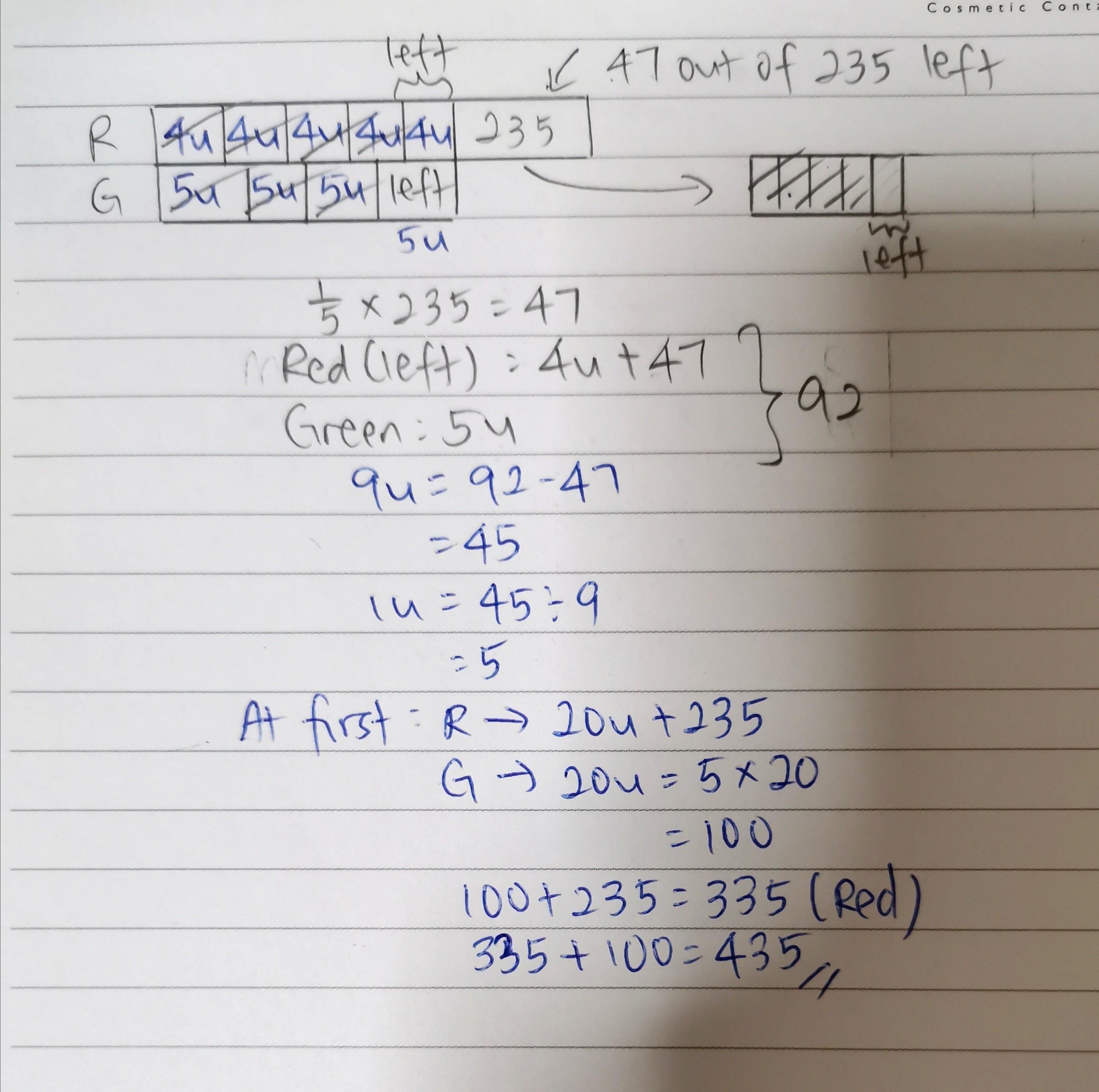
 360 Tutoring Program
360 Tutoring Program
*If you qualify, the Free 360 Tutoring Program will be extended to you at no extra charge.
On top of the tutor you are getting, ManyTutors will provide unlimited free tutors to help you with any questions you may have for other subjects. Just snap a photo of your homework, post, and someone will provide the solution for free.
You will get a complimentary premium account on Ask ManyTutors that allows you to ask English, Chinese, Malay, Math, Science, Geography and History homework questions free of charge.
Under the 360 Program, the tutor will receive a different rate from what you are paying to ManyTutors.


⬛ Represents 4u
R ⬛47 ⬛47 ⬛47 ⬛47 ⬛47
As we can see, R still equals 20u + 235 but we have redrawn it into 5 equal parts of 4u + 47.
The basis behind using 20u (4 x 5) is that 20 is the lowest common multiple of 4 and 5, so using it allows exact division by both 5 and 4.
Of course , you may choose to use other higher common multiples as well.
Using 20u for green and 20u + 235 for red allows us to compare them easily, since the units are of the same size/value/quantity.
After 4/5 of red were burst and 3/4 of green were burst,
1/5 of red were left and 1/4 of green were left
1/4 of green : 20u ÷ 4 = 5u
1/5 of red : (20u + 235) ÷ 5 = 4u + 47
Total left over = 5u + 4u + 47 = 9u + 47
This is equal to 92.
So 9u = 92 - 47 = 45
1u (or simply written as u, the 1 is optional) = 45 ÷ 9 = 5
Total Balloons at first = 20u + 20u + 235
= 40u + 235
= 40 × 5 + 235
= 200 + 235
= 435
Sum(or summation) of the same fraction of individual parts that make up the total = same fraction of total
Eg. 1/5 of 20u + 1/5 of 235 = 1/5 of all the red balloons
Eg. 1/3 × 9 = 3
But 9 = 6 + 3
1/3 × 6 + 1/3 × 3 = 2 + 1 = 3 = 1/3 × 9
so we can say 1/3 × 9 = 1/3 × (6 + 3) = 1/3 × 6 + 1/3 × 3
This is basically the distributive law of multiplication.